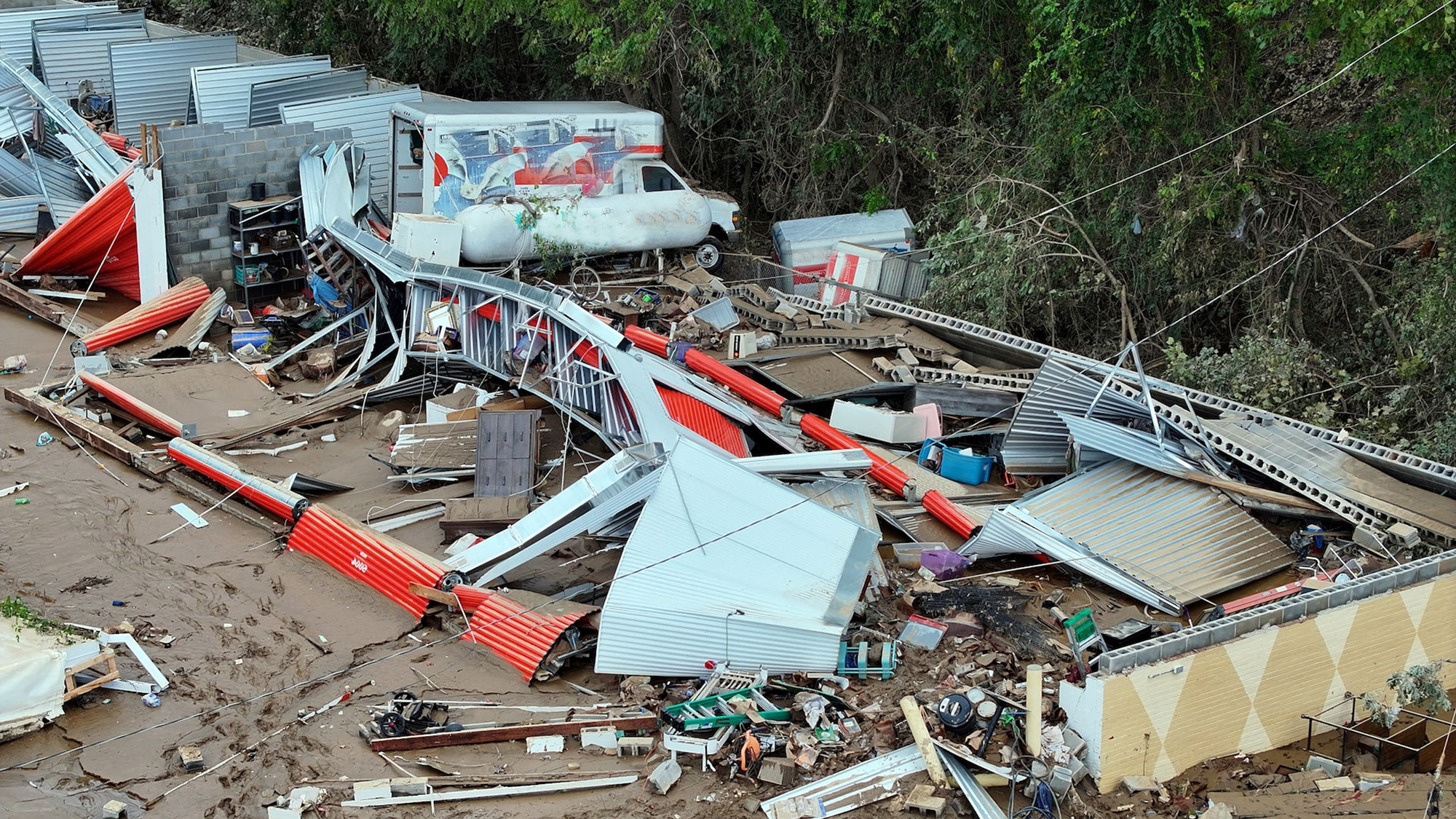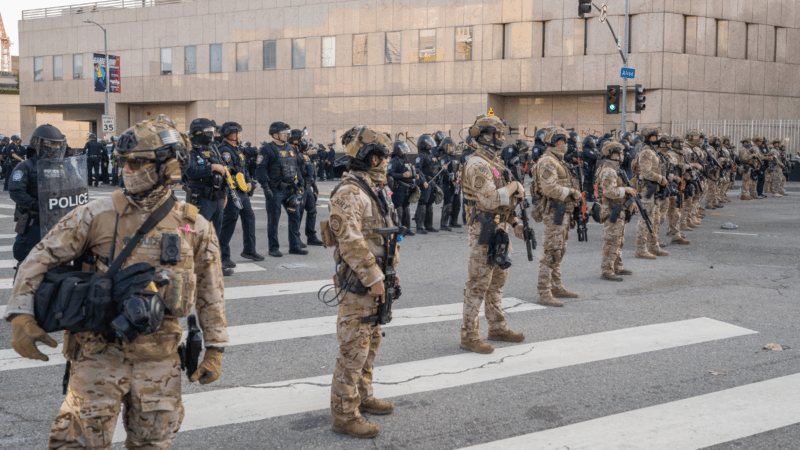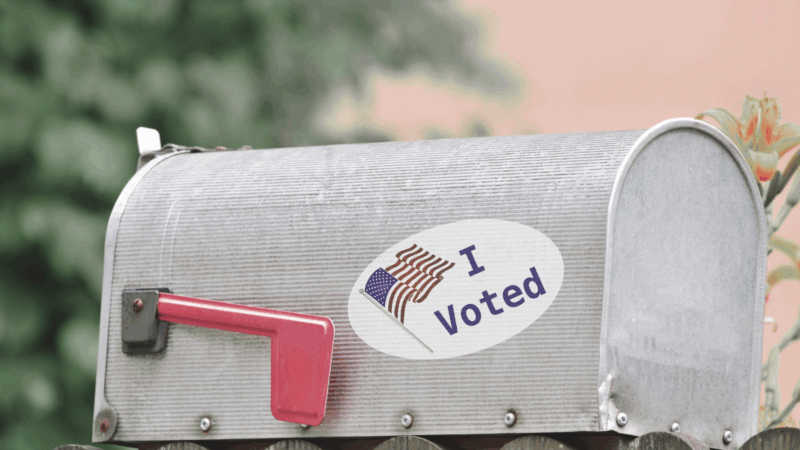The 2024 election after Hurricane Helene: North Carolina
- October 16, 2024

After making landfall on September 26, Hurricane Helene caused catastrophic damage across western North Carolina and other communities in its path. We published this resource explaining the broad legal authority that North Carolina officials have to respond to a natural disaster like Helene. We also provided examples of steps that officials in North Carolina and elsewhere have taken after previous natural disasters.
Last week, the State Board of Elections and the General Assembly passed emergency measures on a bipartisan basis – in fact, both votes were unanimous. This updated resource outlines emergency measures adopted by state officials. These measures should help ensure that eligible voters in western North Carolina are able to vote safely and securely this year. And to the extent that additional measures become necessary to achieve that goal, the State Board retains the authority to adopt such measures in the coming weeks.
Background
On September 28, the President issued a Federal Major Disaster Declaration for 25 of North Carolina’s 100 counties and the Eastern Band of Cherokee Indians.1he affected counties are: Alexander, Alleghany, Ashe, Avery, Buncombe, Burke, Caldwell, Catawba, Clay, Cleveland, Gaston, Haywood, Henderson, Jackson, Lincoln, Macon, Madison, McDowell, Mitchell, Polk, Rutherford, Transylvania, Watauga, Wilkes, and Yancey. There are nearly 1.3 million registered voters in the affected counties – approximately 17% of all North Carolina voters. The affected voters include approximately 480,000 registered Republicans, 290,000 registered Democrats, and 490,000 unaffiliated voters. As of October 10, approximately 48,000 of those voters had been sent absentee ballots and nearly 6,000 had been returned. Many more individuals (including displaced voters) are likely to submit requests in the coming weeks.
The State Board of Elections has been working with election officials from the affected counties and state legislators to coordinate their response. Immediately after the storm, the members of the State Board set out to survey the damage and gather input from the affected counties on what they needed to keep preparations for the election on track. County officials emphasized, among other things, the destruction of polling sites and disruptions to mail service in several counties. The input the State Board received informed the subsequent emergency measures that the State Board unanimously passed on October 7. It also helped craft the emergency relief bill passed by the General Assembly in a special session two days later. As Senate Leader Phil Berger emphasized, the General Assembly engaged in discussions with the State Board throughout the legislative process.2(“‘These are all common-sense steps we can take to ensure that western North Carolinians in the affected counties can vote no matter where they are in the state of North Carolina,’ said Berger during a press conference. ‘These are things that we have discussed with the State Board of Elections, and they were providing feedback to us up to and including last night on changes they suggested that we make…the bill includes those changes recommended by the State Board staff.’”).
As detailed below, the Disaster Recovery Act of 2024 (HB 149) provides $5 million in additional funds to the State Board of Elections. It makes specific modifications to the rules governing the upcoming election in the 25 affected counties.3HB 149, Section 9.1.(b) And it authorizes the county boards of elections in those counties to make a variety of other election changes to suit their communities’ needs, provided they do so by a bipartisan majority vote. All of the modifications enacted or authorized by the bill apply exclusively to the November 2024 election.4HB 149, Section 9.1.(d)
As of October 15, the county boards in the affected counties have all finalized their early voting plans. The Executive Director of the State Board, Karen Brinson Bell, announced on October 15 that 76 early voting sites – nearly all of the planned 80 sites – will be open in the affected counties when early voting begins on Thursday, October 17.
State officials have broad authority to make sure this year’s election is safe, secure, and accessible to all eligible voters
Emergency provisions adopted by the State Board of Elections and those passed by the General Assembly and signed by Governor Roy Cooper are very similar, with the General Assembly largely adopting measures put in place by the State Board and expanding the scope of their application to all counties subject to the federal disaster declaration. The key provisions of HB 149 are summarized below.
Changes to poll worker rules
To address potential poll worker shortages, the General Assembly made the following changes for purposes of the November 2024 election:
- Any eligible voter in the state may be appointed to serve as an election judge, election assistant, ballot counter, or other early voting site staff in any precinct, regardless of their county or precinct of residence.5HB 149, Sec. 9.1(a)(1) Any such appointment requires a bipartisan majority vote of the county board.
- The county board may reassign election officials as needed in order to “ensure there is sufficient knowledge and experience at each voting site.”6HB 149, Sec. 9.1(a)(1) Any reassignment requires a bipartisan majority vote of the county board.
- State employees may serve as election judges, assistants, or ballot counters without taking any dedicated leave time.7HB 149, Sec. 9.1(a)(2)
- The State Board of Elections may develop and directly implement training programs for county- and precinct-level election officials appointed to serve in the 2024 election.8HB 149, Sec. 9.1(a)(3)
Changes to early voting plans
The county boards are authorized to make changes to their previously established early voting plans by a bipartisan majority vote. The county boards must make written findings as to the need for such changes in a written resolution sent to the State Board. The county board must also “seek to minimize, to the extent possible, any reduction” in the overall number of early voting hours available in the county.9HB 149, Sec. 9.1(a)(4) The county board need not comply “strictly” with the law requiring all early voting sites to be open for the same number of hours uniformly throughout the county, but that law must be observed “to the greatest extent practicable.”10HB 149, Sec. 9.1(a)(4)
Potential modifications to early voting plans authorized by HB 149 include:
- Substituting voting sites.11HB 149, Sec. 9.1(a)(4)(a)
- Removing sites that are unusable – though before removing a site, the county board must make all feasible attempts to maintain the site or substitute an alternative site.12HB 149, Sec. 9.1(a)(4)(b)
- Adding or reducing days that any early voting site is open within the established early voting period.13HB 149, Sec. 9.1(a)(4)(c)-(d)
- Extending or reducing hours that any site is open on any days within the established early voting period.14HB 149, Sec. 9.1(a)(4)(e)-(f)
Changes to Election Day polling sites
The county election boards in the affected counties are empowered to make changes to Election Day polling places upon a bipartisan majority vote. Again, the county boards must make written findings as to the need for such changes in a written resolution sent to the State Board. The county boards must “strive to maintain voting access as close to existing polling places as possible,” and must provide notice of any modifications to all affected voters.15HB 149, Sec. 9.1(a)(5)
Potential modifications to Election Day polling places authorized by HB 149 include:
- Transferring voters from one precinct in the county to another precinct for purposes of voting, even if the receiving precinct is not adjacent (so long as no adjacent precinct is available).16HB 149, Sec. 9.1(a)(5)(a). In these circumstances, the county board must maintain separate voter registration and voting records that accurately identify the precinct in which each voter resides.
- Modifying Election Day polling places to combine precincts, with the approval of the Executive Director of the State Board.17HB 149, Sec. 9.1(a)(5)(a). In these circumstances, the county board must maintain separate voter registration and voting records that accurately identify the precinct in which each voter resides.
- Establishing out-of-precinct polling places, including in an adjacent county, with the approval of the Executive Director of the State Board. However, county boards “should resort to establishing polling places outside of a precinct only as a last resort.”18HB 149, Sec. 9.1(a)(5)(b)
- Establishing more than one polling place for voters in a given precinct, including in an adjacent county, with the approval of the Executive Director of the State Board.19HB 149, Sec. 9.1(a)(5)(c)
- Allowing the central transfer precinct to be used by any county voter on Election Day.20HB 149, Sec. 9.1(a)(5)(d)
Changes to absentee ballot rules
All absentee ballots must be returned by 7:30 p.m. on Election Day to be counted; HB 149 does not modify that deadline. However, the law does make several changes to the rules governing absentee ballots.
First, HB 149 expands voters’ options for returning voted absentee ballots. Voters in the affected counties (or a near relative or legal guardian) can return absentee ballots by physically delivering them to any of the following:
- Any county board of elections in the state at any time the county board is open.21HB 149, Sec. 9.1(a)(6)(a)
- Any early voting site in the state at any time that the site is open for voting.22HB 149, Sec. 9.1(a)(6)(b)
- The State Board of Elections office at any time the office is open.23HB 149, Sec. 9.1(a)(6)(c)
The State Board is charged with establishing a uniform process for ensuring that these ballots are transmitted to the appropriate county board prior to the canvass.24HB 149, Sec. 9.2(a)(1) HB 149 sets forth some requirements for this process. For example, upon receiving an out-of-county absentee ballot, the county board or State Board must date-stamp the envelope and ensure its delivery to the appropriate county board by the day before the county canvass, either by trackable mail, a commercial delivery service, or hand delivery by a staff member. If a staff member delivers the ballots, the transport must take place in “a sealed, secure container, with clear documentation of the chain of custody.” Each day, the county boards and the State Board must report the number of out-of-county voted absentee ballots they receive for each affected county.
Second, voters in affected counties (or a near relative or legal guardian) can request absentee ballots in person at the county board’s office until 5:00 p.m. on the day before Election Day (i.e., November 4, 2024).25HB 149, Sec. 9.1(a)(8) For voters outside the affected counties, the relevant deadline for requesting absentee ballots is instead October 29, 2024.
Third, county boards may appoint multipartisan teams to assist eligible voters with requesting and casting absentee ballots, including helping them with requests and serving as witnesses.26HB 149, Sec. 9.1(a)(7) These teams may consist of county board members, employees, or volunteers. Before appointing a multipartisan team for this purpose, the county board of elections must establish guidelines for the team’s operations by a bipartisan majority vote. The State Board is also charged with establishing a uniform process for multipartisan teams to assist voters and document the receipt and transmittal of voted absentee ballots to the appropriate board.27HB 149, Sec. 9.2(a)(2).
Fourth, county boards must process requests to “cure” absentee ballot issues at the county board offices – including requests to spoil a previously issued absentee ballot and reissue it to the voter. At the voter’s request, the county board must allow the voter’s near relative or legal guardian (or anyone designated by the voter to assist due to the voter’s disability) to retrieve any documentation needed to cure the deficiency and take it to the voter. The county boards must maintain a log of individuals who present at their offices to retrieve cure documentation on behalf of a voter.28HB 149, Sec. 9.1(a)(9)
Changes to poll observer rules29HB 139, Sec. 9.1(a)(10)
Poll observers, as selected by the county election boards, are now allowed to be drawn from any North Carolina county. However, observers still must meet the previous qualifications under N.C. Gen. Stat. 163-45.1(a).
Additional funding for election administration
As part of the $273 million Helene Fund established by the relief bill, the General Assembly appropriated $5 million to the State Board of Elections to facilitate voting in affected counties.30HB 149, Sec. 6.1.(a)(4) The State Board is directed to allocate these funds to address the needs of each county board of elections. These needs can include:
- Technology or access to it, such as internet connectivity.
- Printing for materials like reprinted absentee ballots, and election-related communications.
- Temporary election staff at the state and county level.
- Resources to enable in-person voting, including for changing voting sites.31HB 149, Sec. 9.1.(c)
Voter education provisions
Finally, the State Board is required to educate voters affected by Helene on their options for casting a ballot in the 2024 election and to answer individual questions in a voter resource. In addition to being posted on the State Board’s website, educational materials must be shared with state agencies, shelters, and other organizations assisting affected North Carolinians. While firms can be contracted by the State Board to make this happen, no firm actively working on campaigns for elected offices in the state can be contracted.32HB 149, Sec. 9.2.(a)(4)
Other provisions of North Carolina law help ensure the election will be safe, secure, and accessible to all eligible voters
Even before Helene hit the state, North Carolina law included an exception to the state’s voter identification provision for victims of natural disasters. If a registered voter is unable to produce an acceptable form of identification due to a declared natural disaster that occurred within 100 days of the election, the voter may complete an affidavit at the polling place and cast a provisional ballot.33N.C. Gen. Stat. § 163-166.16(d)(3), (f). This exception also applies to absentee ballot voters who may include a photo ID exception affidavit along with their voted ballot rather than a photocopy of their identification.34N.C. Gen. Stat. § 163-230.1(f1). These provisional ballots will be counted unless the county board of elections has grounds to believe the affidavit is false.
Finally, the Governor also has clear authority to take action in response to natural disasters. The Governor directs the State Emergency Management Program and can make use of the “services, equipment, supplies, and facilities” of all state and local agencies.35N.C. Gen. Stat. § 166A-19.10(b)(7). The Governor also may reallocate funds among the various state agencies in certain circumstances.36N.C. Gen. Stat. § 166A-19.40. And with the concurrence of the Council of State, the Governor has the authority to “waive a provision of any regulation or ordinance of a State agency or a political subdivision which restricts the immediate relief of human suffering.”37.C. Gen. Stat. § 166A-19.30(b)(4).
The State Board retains authority to adopt additional emergency measures if necessary
Finally, HB 149 makes clear that the State Board has the authority to “establish[] … further emergency measures related to Hurricane Helene and its aftermath” in accordance with N.C. Gen. Stat. § 163-27.1(a) – the statute granting emergency powers to the State Board. Importantly, however, the State Board is not permitted to exercise its emergency powers for this year’s election in a manner “inconsistent” with HB 149. In other words, the State Board may not adopt emergency measures that contradict or undo any of the modifications made by HB 149. The sections that follow describe the general emergency powers of the Board, the considerations the Board must take into account in crafting emergency measures, and other explicit limits on the Board’s authority.
The emergency powers of the State Board of Elections
The State Board “may exercise emergency powers to conduct an election in a district where the normal schedule for the election is disrupted by,” among other things, “a natural disaster.”38N.C. Gen. Stat. § 163-27.1(a). The State Board also has specific statutory authority to prescribe an emergency rule in the event of “an international, national, or local emergency or other situation arises that makes substantial compliance” with the Uniform Military and Overseas Voters Act “impossible or unreasonable.” N.C. Gen. Stat. § 163-258.31. Under the governing administrative rules, the State Board “must ensure that remedial measures are calculated to offset the nature and scope of the disruption(s).”398 N.C.A.C. 01.0106. The State Board must consider ten specific factors in crafting any emergency order:
- The geographic scope of the disruption;
- The effects on contests spanning affected and non-affected areas;
- The length of forewarning and foreseeability of disruption;
- The availability of alternative registration or voting opportunities;
- The duration of the disruption;
- The displacement of voters or election workers;
- The ability to access secure voting locations;
- The sufficiency of time remaining for the General Assembly and the Governor to adopt emergency legislation addressing the disruption;
- Any detrimental effects on election integrity and ballot security;
- Any aggregate effects on important Federal and State certification deadlines
Limits on the State Board’s emergency powers
North Carolina law also imposes express limitations on the State Board’s ability to make changes in response to natural disasters:
- The State Board must issue emergency orders by a majority vote at an open meeting.40N.C. Gen. Stat. § 163-27.1(a).
- The State Board’s emergency orders “shall avoid unnecessary conflict” with other provisions of North Carolina’s election law.41N.C. Gen. Stat. § 163-27.1(a)
- The State Board cannot (i) deliver absentee ballots to voters who did not submit a valid request or (ii) order an election to be conducted entirely by absentee ballot.42N.C. Gen. Stat. § 163-27.1(d)(1)-(2).
- The State Board cannot delegate its emergency powers to the Executive Director or any other individual.43N.C. Gen. Stat. § 163-27.1(d)(3).
- The State Board cannot alter redistricting plans under its emergency powers.44N.C. Gen. Stat. § 163-27.1(b)-(c).
Important considerations in determining further appropriate emergency measures
In the event additional emergency measures appear necessary in the coming days and weeks, we recommend state and county officials continue to take the following considerations into account:
- Historical trends in voting methods: North Carolina historically has low rates of absentee voting. In the 2022 election, for example, only 5% of voters cast absentee ballots. Even in the 2020 election at the height of the COVID-19 pandemic, only 18% of voters cast absentee ballots. These numbers reflect, in part, the fact that North Carolina’s rules governing absentee ballots are both strict and more complicated than those in place in many other states.
- Potential impact on voter turnout: Researchers have studied the impact of previous emergency election measures on voter turnout. For example, after Hurricane Michael in 2018, Florida Governor Ron DeSantis issued an executive order making several changes, including expanded early voting periods and consolidated polling places in eight counties. Researchers later found the consolidation of physical polling places appreciably depressed turnout, as voters who would have otherwise voted in person at their normal polling place (and presumably would have done so had alternate sites been established closer to their homes) chose not to due to the increased distance. The expansion of early and mail-in voting did not offset this depreciation.
- Certification deadlines: The State Board’s regulations require it to consider the effects of any emergency measures on state and federal certification deadlines. That consideration is particularly important for this year’s presidential election. The recently enacted Electoral Count Reform Act (ECRA) requires the Governor to certify North Carolina’s slate of presidential electors by December 11, 2024.453 U.S.C. §§ 5(a)(1), 7. Even short delays in the post-election canvass and certification processes could jeopardize North Carolina’s ability to meet the ECRA deadline. Accordingly, any additional emergency measures should be aimed at ensuring that all eligible voters can vote while minimizing the risk of delays in the post-election process.
Appendix
North Carolina has previously taken steps to facilitate voting by those affected by natural disasters.
After Hurricane Florence in 2018, the General Assembly and the Executive Director of the State Board of Elections authorized a number of changes to the election laws to ensure that voters could cast their ballots. Specifically, the General Assembly passed a recovery bill that included the following election relief provisions:
- Extending the voter registration deadline in affected counties to October 15, 2018.
- Allowing county boards of elections to designate substitute one-stop sites at which voters could apply for and cast absentee ballots, where the county’s original one-stop site was damaged or made otherwise inaccessible or impractical for use due to hurricane damage.
- Allowing county boards of elections to adopt resolutions altering voting places, where voting places had been damaged or made otherwise inaccessible or impractical for use due to hurricane damage.
- Reiterating that county boards could adopt other changes to voting places under the statutes that govern out-of-precinct voting places, satellite voting places for elderly and disabled voters, and the temporary use of two voting places in a given precinct.
The Executive Director of the State Board of Elections ordered additional emergency measures:
- Extending the deadline for receiving absentee ballots to 5 p.m. on November 15 (i.e., nine days after Election Day), so long as the envelope was postmarked on or before Election Day.
- Authorizing voters to deliver absentee ballots in person to any early voting site or county board office in the state by 5 p.m. on November 6. County boards were then required to ensure delivery to the appropriate county board office prior to the county canvass meetings on November 16.
- Authorizing the county board to appoint nonresident precinct officials in any precinct in an affected county that had an insufficient number of precinct officials available due to the effects of the hurricane.
Consistent with then-governing law, this emergency order was issued by the Executive Director of the State Board rather than by a majority vote of the full Board, as is required today. We are not aware of any legal challenges to the Executive Director’s exercise of this authority.
State and local election officials across the country have ordered similar changes in response to natural disasters.
There are several examples from recent history where state and local officials responded to natural disasters by making voting more accessible:
| Hurricane Ian Florida (2022) | Hurricane Ian hammered the State of Florida late in the 2022 election cycle, raising concerns that in-person and absentee voting alike would be impacted by the storm. Election officials rallied to ensure that mail-in ballots were sent out to voters in time, and that voters inaccessible by the postal service were able to pick up ballots from alternate sites in advance of the election. Once it became clear that full precinct voting would not be possible in three counties, Governor Ron DeSantis relaxed the restrictions on early voting and allowed affected voters to cast ballots at alternate sites, as well as request to have absentee ballots sent to different addresses than those on file if they had been displaced by the storm. |
| Hurricanes Laura, Delta, and Zeta Louisiana (2020) | The state of Louisiana reeled from a trio of storms that made landfall in 2020, complicating an election season that was already grappling with the COVID-19 pandemic. In response, the state consolidated polling places into so-called “mega-precincts,” and circulated mailers to affected voters encouraging them to cast provisional ballots if they had been displaced from their registered polling places. With the last of the three storms, Zeta, touching down days before Election Day, officials in Southeast Louisiana scrambled to deliver generators and light towers to minimize the number of polling places that needed to be closed. |
| Hurricane Sandy New York, New Jersey (2012) | Sandy made landfall in the United States on October 29, 2012, merely eight days prior to Election Day. 24 states were impacted in some way, with New York and New Jersey suffering particularly intense damage. Under their respective governors, Andrew Cuomo and Chris Christie, both states made allowances for displaced voters to cast provisional ballots at any polling place they could access. New York extended the deadline for absentee ballots to be received and counted to thirteen days after Election Day, and New Jersey voters were allowed to email or fax in their ballots. The process was not without its share of issues, with technological breakdowns, shortages, and long lines, but neither allowed the crisis to stand as a barrier to voting. |
Related Content
Join Us.
Building a stronger, more resilient democracy is possible, but we can’t do it alone. Become part of the fight today.
Donate
Sign Up for Updates Sign Up for Updates
Explore Careers Explore Careers
How to Protect Democracy How to Protect Democracy



